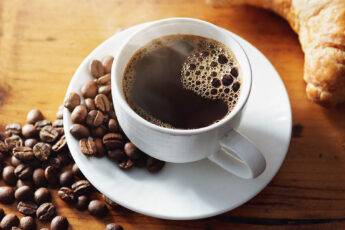The Fundamental Rules of Food and Wine Pairing You Should Know

Have you ever find yourself in a situation where you prepare a sumptuous meal yet don’t know which wine to pair? Or, did you ever get stuck in a wine store where you get confused about what wine to buy to satisfy your guests? These questions will surely hit your mind when you host a food and wine pairing activities.
Matching your food with the right bottle of wine comes critical. It is because the taste of the wines can ultimately affect the flavor of the food. Hence, it is always the primary requirement that you should match carefully your wine and food to offer the best meal as possible.
Although food and wine pairing differ depending on personal preferences, your ability to match good wines with different dishes will always come in handy. Generally, the necessary thing you need to contemplate when pairing food with wine is to complement the body of the wine to the flavors of the dish to be served.
Here are some basic steps you should learn when it comes to foods you are serving while picking the most appropriate wine label that will go well with them. It will aid you in mastering the art of food and wine pairing activities.
Find the Most Favorable Balance
Food and wine pairing must complement each other in terms of taste. It means that whatever the flavor of the food you are going to serve should not overpower the taste of the wine. Both should complement and offers a balance of taste. It will ensure a good dining experience for your guests.
The basic rule you need to learn in pairing wine and food is the taste. It means that savory and strong-flavored foods need full-bodied wines while light dishes need light flavored ones. It is also essential that you determine the weight of your food by assessing its weight content.
If the food you serve comes in a lesser fat, then you must serve it with lighter wines. Wines with less alcohol content and more transparent color come as lighter ones.
Check the Most Distinguished Flavor of the Dish
Finding the most prominent flavor of your meal is the easiest way of pairing it with the right wine label. It refers to the feature of the dish that provides the intensity of flavors such as sauce. You can also look for the ingredient that showcases the overpowering taste of the meal, so from there, you can know what wine to pair.
Some dishes may come in the same ingredients but varies in the sauce. Take note that a salmon dish with a creamier sauce must be paired with a heavier wine. Some wines like Malbec and Pauillac Bordeaux Wines can pair with spicy dishes because they complement and exudes the authentic taste of this wine.
The Character and Composition Always Matter
Character and composition refer both to the food and wine you are going to serve. Make sure that you check the texture and structure of the food before you pour a glass of wine that goes with it. It will create a high impact on an impression on your guests when you know which one works well for these activities.
The rule in finding both character and composition comes easy. You only have to pair high-acid wines to the same type of food. Do not pair high tannic wines to fatty foods. It will ruin the taste and can hurt your guest’s appetite. In some cases, a Sauvignon Blanc works well with dishes that require a sauce such as a vinaigrette. Also, wines that come in high-tannic texture must go along with salty and fatty foods.
Take Time to Ponder on Flavor Links
Flavor links refer to the composition of food and wine, which you need to connect. You need to carefully assess the characteristics of your meal as well as the whole structure of the wine. Below is a cheat sheet you can follow to pair your dishes with the exact wine label rightfully.
- Chardonnay. It can go along with foods that contain creamy sauce and fats.
- Champagne. You can pair this wine with salty foods.
- Pinot Grigio. It works well with light meals.
- Sauvignon Blanc. It blends well with tart dressing dishes.
- Dry Rose. It pairs well with cheese dishes.
- Malbec. It goes well with dishes made of sweet and spicy sauces like barbecue.
- Cabernet Sauvignon. It pairs with red meat dishes.
- Syrah. It blends with recipes that contain spicy characteristics
- Riesling Wines. It comes well with Asian dishes made of sweet and spicy ingredients.
- Zinfandel. It goes perfectly with meals like mousses, terrines, and pates.
- Pinot Noir. It pairs with truffles and mushrooms.
Now that you know the essential basics of pairing food and wine, you can now throw a dinner party or host a meal gathering with confidence.
Share via:





Leave a Comment